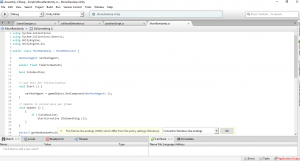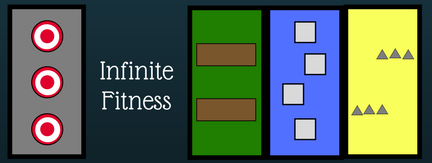This quarter’s workload is definitely getting to me; every week I feel like I could do much more in my games, and this week I wanted to do a lot more but time definitely got to me this week. I was hesitant about this project because when I think of procedurally generated I think recursion, and though it may seem like it would be easier just randomly generating objects/code (more broadly not having to place everything), recursion definitely was the death of me in my computer science classes. The code got to me more in this project as well (which delayed my progress in completing my game) because I couldn’t see what was happening at all times. I had many, many ideas for this game, but many of them were, again, the easy go-to’s. But this time, instead of creating my idea then shaping how it looked, I decided on my aesthetics that finalized my idea for my game.
Month: October 2017
Limbo
This week as I was preparing for my Pecha Kucha presentation on Arnt Jensen, the CEO of the indie video game company Playdead. One of the few games that this company developed caught my interest, the game is Limbo. This puzzle filled game is a very straight forward minimalistic game. It is about an unnamed boy,which the player controls, travels through this dangerous and trap filled environment to look for his beloved sister. Now this game is filled with excessive death scenes and gruesome visuals of the little boy, which is the goal from the developers ,because Playdead claimed that through “trials and deaths” the players learn how to solve the puzzles/problems. Many critics describe this game as a work of art that is filled with black and white color tones (film noir), minimalism, ambient sounds and expressionism. The developer’s goal was to make this game a open book, open to the audience’s interpretations. So instead of a young boy who is in search of his beloved sister (of course this is only a subjective theory which most people believe) it can be both brother and sister who died together, entered Limbo and the boy is trying to find his sister in this creepy afterlife. Now with that being said, some critics are actually disappointed with the storyline or the lack of it, because the game does not tell the audience about anything, the boy just woke up in the middle of the forest and now he is trying to look for his sister. All in all, I played this game slightly, and I absolutely loved it, especially the soundtrack, it gave me this creepy yet relaxing ambient vibe. I definitely give it a 10/10 so far….
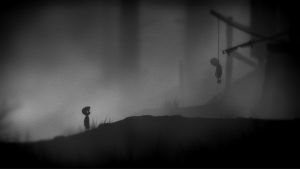
Project3:Can’t Dodge
I feel regretful that we didn’t get the time to play through everyone’s game this week. This week’s project involves more difficult coding. At the beginning, I have a lots of ideas that I want to put it into my game, such as creating buffs that change the ground size, buffs that offers a shield to block, buffs that increase movement speed, and etc. However, the coding part is much harder than I thought. I wasn’t sure if it is better to put the script in a holder or put it into a object to achieve certain purpose. I have some problem creating bullets that randomly generate from all angels around the plane. After this week’s lecture, I think I should be able to fix the problem.

Though the game turns out to be “playful”, it’s satisfying to see some of the features works pretty well, for example, the rotation of the character, the size change on the character. All these functions could be very useful for other projects too. After this week’s project, I feel like it would be helpful to draw a layout of the game first and clear up all the relationship between game objects and script before actually start doing the project.
TRUST
I thought a lot about what story I wanted to tell in this week’s game. The fact that we had to make a game without visual representations like people or textures made it really good for an abstract sort of way of looking at how objects can mentally take effect on players or viewers.
TRUST was based on my own experience as someone who is always on the search of achieving certain goals. But is that the end? Making this game made me think about exclusion, and the reality of trying to “get into your own social circle”. Whether you are accepted or are neglected into wandering on your own, the contact you make will (sometimes) change you. I played off of the concept of “friend cliques”, and how exclusive some could be. As the title states, basically, do you trust those spinning squares, those colorful dots, or the game itself to provide a way for you to win?
I liked the feedback that I got for the game. I was interested in how people interpreted the relation of the squares to the circles, and to them spinning around circles as a “cultish” move. One critique I got was that “you don’t know which one will screw you over and which you will not unless you play it over and over.” There was a sense that you had to collect all the black squares in order to “win”, but in truth, you could not. There were always going to be black squares that “hurt” you no matter what you do. Just like in reality when you meet someone, you never know if you can get along with them or not until you have had a couple fights. Essentially, your trust in others is on the line.
Coding this though, was painful. I got accidentally ended up with this donut that opened and closed, which was pretty cool so I left it.
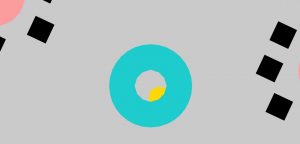
Project 3 Procedural Rhetoric Game: Puddle
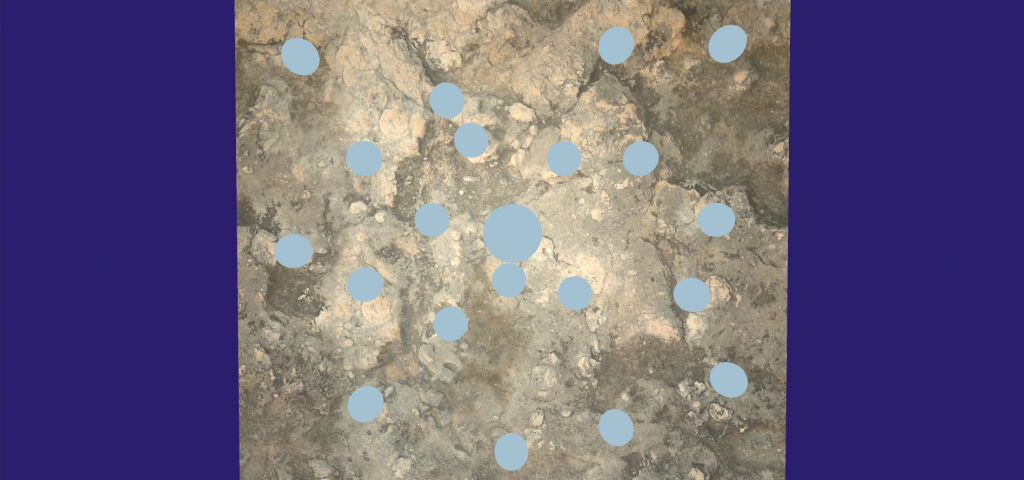
Though “Puddle” is currently unplayable, I think it has a lot of potential to be a therapeutic and relaxing player-less game.
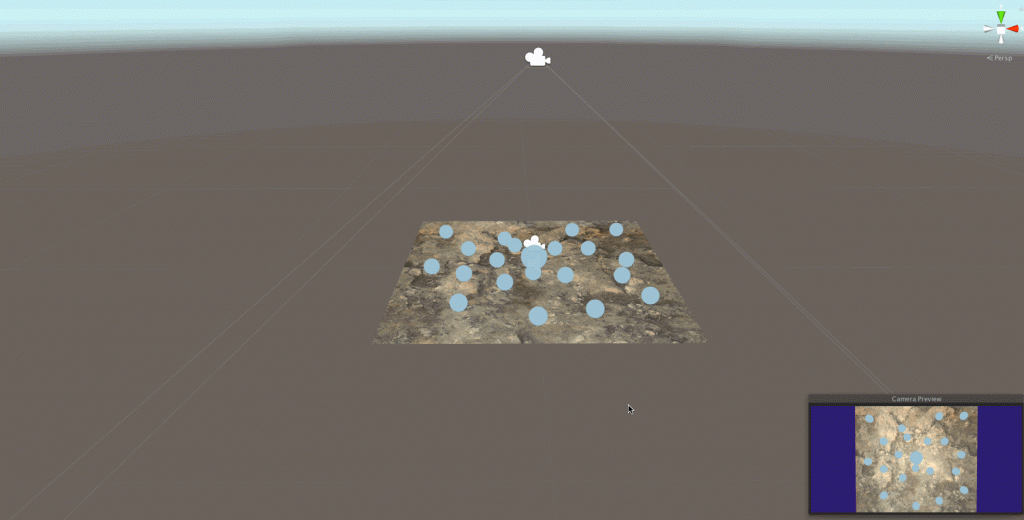
Currently, Puddle looks like the above images and the puddle (the large circle in the middle) can move around, over the other raindrops. When the game is finished the puddle, the player, will be stationary and those raindrops will turn on and off (or make contact with the ground) and when they make contact with the puddle the puddle will grow eventually expanding past the edges of the player’s screen at which point the game will restart.
In order to complete Puddle I’ll need to make a modification so that the FPS controller doesn’t move, and so that the only button the player can control is “R” and when it is pressed it will cause another rain drop to fall (AKA: turn on one of the grey-blue game object spheres at random). I will make an autoplay modification to do all of this and use collision detection to determine when the drops contact the puddle, and transform to increase the size of the puddle as a result of the collision.
Also, I will set the game to music. This instrumental liquid drum n bass album, called Meliza, was published by Cleanscreen on the Internet Arcive in 2010. It has special significance in my life because its message has helped me process my stress and release many tears and fears. Hopefully my game Puddle will too.
Going it alone
I debated whether to name this week’s game Chorus or Arietta for a while. On the one hand, you’re one square, a solo individual, and arias are solo pieces. On the other hand, if you so choose, you can encounter the songs of many other squares, many other individuals, creating a chorus. Did I want it to feel inherently a little lonesome, or did I want it to feel warmer right off the bat?
I ended up settling on Arietta because I wanted to give the player the choice to add accompaniment to their solo. They only form a chorus if they want to.
An idea I was not able to act on but would like to incorporate into the game if I revisit it later was that, at the end, instead of playing the audio for a specific piano piece (a royalty free piece by Kevin MacLeod called “Avec Soin”), players would hear specifically the notes they chose to hit, in the order that they hit them, but at a set – and perhaps a bit faster – pace. If you hit all the cubes, you hear all the cubes. If you hit some, or hit them in a particular order, you would hear their notes in that order. And, if you did not hit any of them, you would reach the end and hear silence.
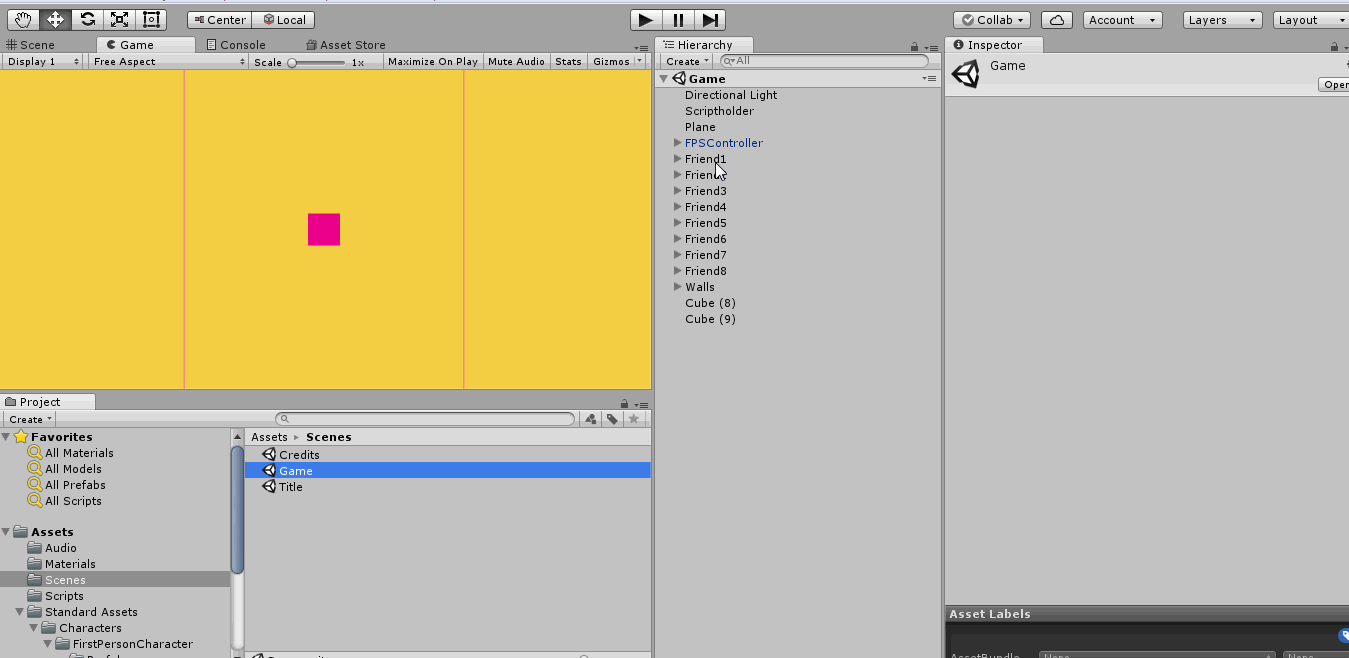
For a while, I intended to organize the squares so that they would create a song according to more traditional interpretations of what a song is. After talking about it during critique, however, I realized that they do create a song – it’s just a bit of an experimental piece, and that’s okay.
What does the song at the end mean? Maybe it is a win scenario. Maybe it is your prize. Maybe it is a reflection of your gameplay, or an invitation for you to reflect on your experience. Maybe you lost (no matter how you went through the game). Maybe it is a memorial. Maybe it has no meaning. Maybe it is the whole point of the game, the main part, the star, and you can only get there by experiencing this long pathway with all these squares in the way.
One of my critique partners noted that, because you’re touching all these other squares, and they’re making noise, but you’re not, it almost makes it feel like there’s something wrong with you, like you’re touching all these squares to try to figure out what’s wrong with you, and maybe to fix it.
Another comment made during critique brought up the idea that, after a while, you do start to make noise. Perhaps, when you’ve hit enough cubes, you start to sing too?
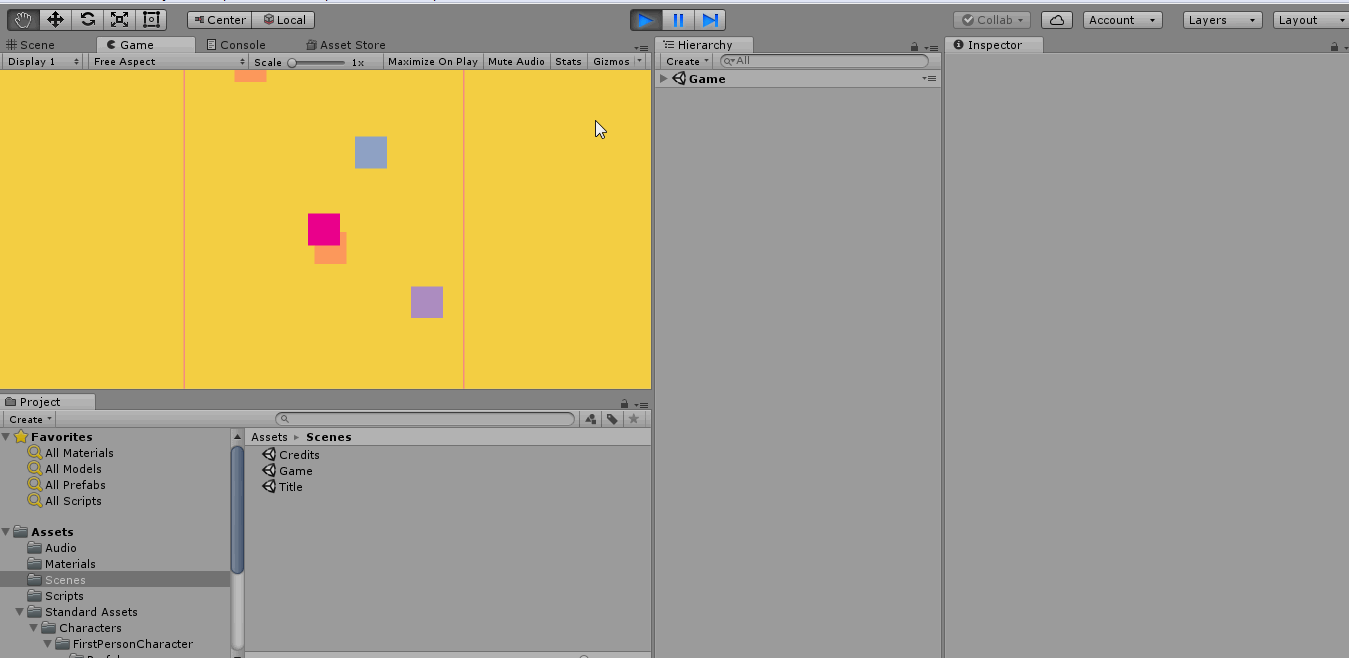
I think this game held a couple different meanings for me at different points in its development. Sometimes it felt like a calming experience made simply for the sake of being calming. Sometimes it felt like it was about meeting new people and hearing their experiences. Sometimes it felt like it was about making people around you happy by touching their lives somehow. Most of the time, it felt like it was about asking for help.
The end screen of Arietta reads “If you go it alone, you cannot make anything.” This is largely influenced by the final interpretation listed above, but may apply to any number of interpretations, I think.
An interesting part of the critique for me was watching how people maneuvered around the space. Of all the people who critiqued and played my game, only one tried to go down before going up. All but one felt the need to touch every square. The outlier touched a few, and then went straight through to the end. Only one person looped back down to hit squares they had already touched, changing the arrangement of the notes that they heard as they played. A few people started out avoiding the squares, and then touched one to find out what would happen. Almost every player hit the squares in the same order.
The individual notes, by the way, are from this project by the University of Iowa’s Electronic Music Studio. The color scheme is inspired by Papergirls, which I’m only two books into, but this palette has been influencing a lot of my work since I got the first book a month or two ago.
Woooo Finding Your Dreammate
Hi everyone, 🙂
I created this game called “Finding Your Dreammate.” I was inspired by the game Marriage – the one which the professor asked us to test play! I thought it would be cool if I can create a game that uses a similar concept but is presented in a different way. “Finding Your Dreammate” is a puzzle game that eating the right yellow square is the key to win this game.
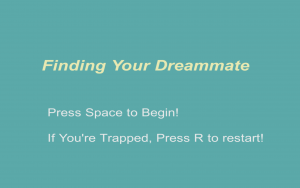
There’re black squares representing players in the relationship that will either make you lose the game or waste your energy by shrinking the size of your character.
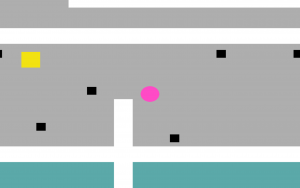
Here’s the winning message after you find your dreammate! 😉
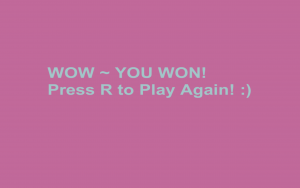
In the process of making the game, I encountered a lot of bugs, error messages as well as the things that don’t work as I expected. I went to the office hours and ask for help from the professor. It was painful if you think your code and logic is correct, but the objects JUST DON’T WORK!!! I think it’s an important process for us, beginner coders, to learn how to code by keeping making a lot of errors and having the things that don’t work because they train us to think more logically and become better in coding over time.
Hope you like my game,
Elle
2D Games…There’s so much more to Games than Visual Complexity
In Star Collector, you simply must collect 10 white stars to win! On your voyage, you must avoid the dangerous red comets, or if you get hit it’s instantly game over!!

Continue reading “2D Games…There’s so much more to Games than Visual Complexity”
Gluttony
Description
You are Pink square driven to rule the sea of Purple and Blue.
Will you prevail or give in to gluttony?
Background
Surprisingly, this game turned out better than expected. The original idea behind this game was to have the player be a square that changed colors. The objective was to have the player collect squares the same color as themselves and avoid hitting all other colored squares. The challenge would be the movement of the other squares and the fact that as they changed colors. So the color they needed to collect would also change. However, as I started to code I found it difficult to have an object move in a direction while changing shapes, figure out how to detect the color of other objects and how to change main color square as time went on. Given these constraints I decided to work with what I as able to successfully code and adding difficulty with aesthetics and converting the game to a puzzle with unexpected plot twist here and there. The challenge then turned into a balancing act due to having a limit amount of collectibles one can collect and adding different reactions to different objects. I found that though the layout and goal was simple it made it more frustrating when a player was not able to successfully complete the game.
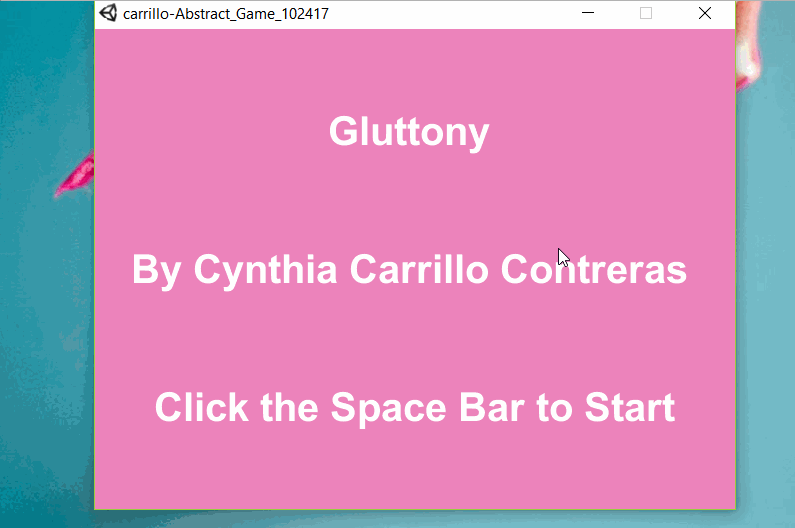
Dodgeball
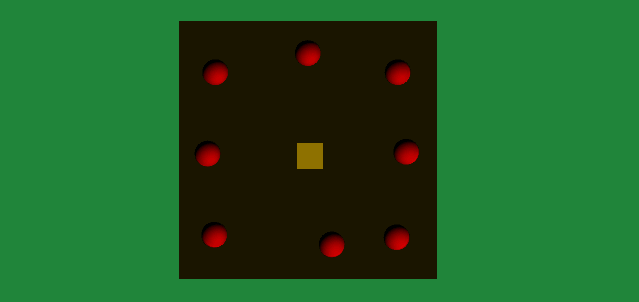
Finally a game I can be proud of! However, just like the last game, I was getting very frustrated with the coding. I wanted the dodgeballs in my game to move on their own so I looked up countless tutorials on how to make objects move randomly. At first I was looking for something to project a ping pong effect for the balls so that when they hit the walls they would ricochet. However, all of the codes that produced a ping pong effect weren’t working for me so I researched other options. Eventually I came across a video on how to make objects move randomly using NavMeshAgent and I can honestly say I like how it turned out. It wasn’t initially what I had planned, but with this code it added a complete randomness and unpredictability to my game, which with ping pong someone could strategize by seeing where the balls would bounce off. Here the balls move (or don’t move for a few seconds) in complete randomness, which threw off all of the players. And with the feedback I received, a lot of people liked that unpredictability. It made the game more challenging and anxiety inducing. I received a lot of positive comments about my game and I’m extremely happy that people found it so addicting! I found it hilarious that I was getting suggestions on how to make the game more challenging, such as having the plain shrink over time or add in more dodgeballs as time goes on. The one thing I regret not putting was a timer/score board. I feel that receiving a high score would definitely give the player a motive to keep playing, however not having one at the moment didn’t stop people from constantly restarting the game.
